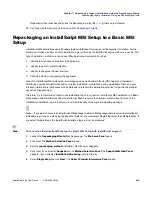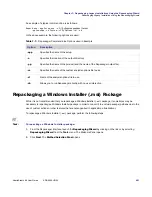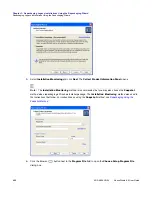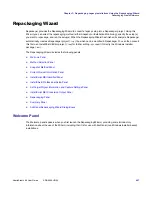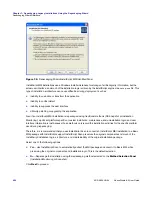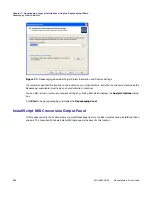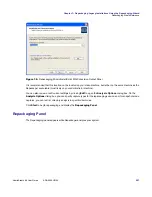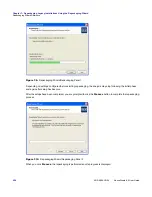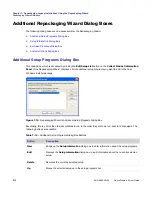
Chapter 7: Repackaging Legacy Installations Using the Repackaging Wizard
Repackaging Wizard Reference
AdminStudio 9.5 User Guide
ADS-0950-UG00
501
On the Snapshot Method Panel, you have the following two options:
The single step method is very straightforward if you are repackaging applications and not performing many
system changes. The multiple step method allows greater flexibility because a setup is not required. This allows
you to capture system configurations within the Repackager output, and ultimately within a Windows Installer
package. For example, you could modify the screen color depth and create an MSI package for just that
configuration.
If Single Step is selected, the
Collect Product Information Panel
is displayed when you click Next. If Multiple
Steps is selected and you are performing the initial snapshot, the Collect Product Information panel is displayed,
but the Setup Programs area is disabled. If you are performing a system status change analysis, the
Repackaging
Panel
appears when you click
Next
.
Collect Product Information Panel
The Collect Product Information panel gathers information necessary for repackaging the installation(s).
Table 7-10 •
Snapshot Method Panel Options
Option
Description
Single Step
Repackaging in a single step requires you specify at least one setup program to
repackage. The Repackager first takes an initial system snapshot, then runs the setup
program(s) you specify, and then takes a second snapshot to create the script file that
can be converted into a Windows Installer package.
You also have the option of requiring the Repackager to prompt you before running the
setup program(s), allowing you the opportunity to make changes to your system that
you want included in the final package.
Note •
If you are repackaging an InstallShield Editor or DevStudio 9.x InstallScript installation and
want to use the
InstallShield Professional Logging Method
, select
Single Step
.
Multiple Steps
Repackaging in multiple steps allows you to run the Repackager to obtain an initial
system snapshot, after which the Repackager exits. You can then perform any
modifications to the system, such as changing configurations, running installations, and
so forth. After making the necessary modifications, run the Repackager again to analyze
system status changes. The difference between the second Repackager execution and
the first results in the script file that ultimately can be converted into a Windows Installer
package.
Summary of Contents for ADMINSTUDIO 9.5
Page 1: ...AdminStudio 9 5 User Guide Version 9 5...
Page 50: ...Contents 50 ADS 0950 UG00 AdminStudio 9 5 User Guide...
Page 52: ...52 ADS 0950 UG00 AdminStudio 9 5 User Guide...
Page 156: ...156 ADS 0950 UG00 AdminStudio 9 5 User Guide...
Page 440: ...440 ADS 0950 UG00 AdminStudio 9 5 User Guide...
Page 1090: ...1090 ADS 0950 UG00 AdminStudio 9 5 User Guide...
Page 1426: ...1426 ADS 0950 UG00 AdminStudio 9 5 User Guide...
Page 1686: ...1686 ADS 0950 UG00 AdminStudio 9 5 User Guide...
Page 1794: ...Chapter 24 AdminStudio Public API Reference 1794 ADS 0950 UG00 AdminStudio 9 5 User Guide...
Page 1842: ...Index 1842 ADS 0950 UG00 AdminStudio 9 5 User Guide...



